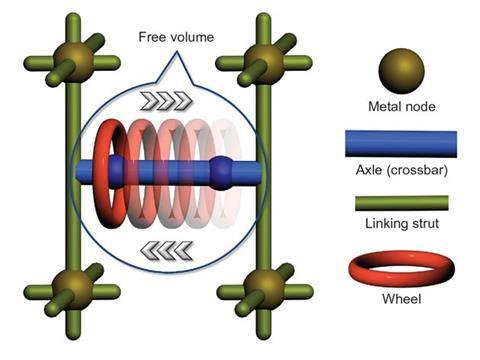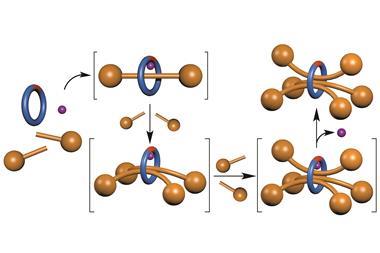Rotaxane ‘switch’ has been successfully wedded to a metal–organic framework

Such a bottom-up approach to nanotechnology was first proposed by Richard Feynman in his 1959 lecture, There’s plenty of room at the bottom. Nanotechnology has since grown into a large scientific enterprise, with many in the community attempting to replicate macroscale devices on the atomic scale.

Kelong Zhu and his colleagues at the University of Windsor have overcome this obstacle by inserting a rotaxane into a MOF between two of the framework’s struts. The shuttle is made up of a crown ether macrocycle and two benzimidazole sites, which act as the destinations. The researchers argue that this arrangement provides a regular and coherent motion between two MOF struts – a property that is hard to achieve in solution.












No comments yet